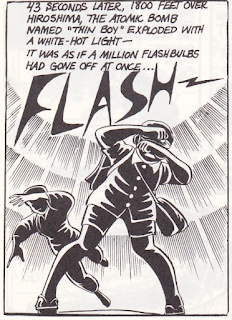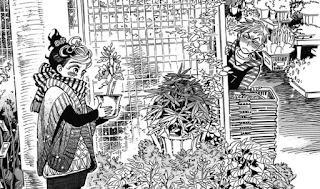week four: documentary manga
This week, we covered documentary manga, specifically an autobiographical manga called I Saw It by Nakazawa Keiji. I was first introduced to this manga by having taken David's Comics class in Sophomore year, so this was my second time reading it. The bone-chilling effect, however, remains.
It reminds me much of Studio Ghibli's Grave of the Fireflies, in that these stories were both autobiographical events of the authors who survived the atomic bomb. However, Studio Ghibli's movie was adapted from a book by Nosaka Akiyuki, who wrote Grave of the Fireflies in what many scholars say was a show of deep remorse that he didn't die with his sister during the atom bomb. In Nosaka's real life, his sister died of malnutrition, but he survived. In his novel (and the movie), the characters that are based on Nosaka and his sister both ended up dying.
Talking about the atom bomb is incredibly important, especially (!) in a class devoted to anime and manga, because it impacts so much of Japan's modern cultural history. The atom bombs of Hiroshima and Nagasaki didn't target a military base, but instead two cities filled with civilians. I want to say plainly: Americans devastated hundreds of thousands of innocent people, and all war is terrible and a crime. Along with this, speaking as an American of Chinese descent, Japan devastated so many countries, including my own. Japanese soldiers murdered, raped, kidnapped, colonized, and destroyed parts of China, Korea, and the Philippines, so on one hand, I am 100% resolutely against the use of nuclear weapons and the atrocities America committed, talking about World War II from Japan's perspective does bring up very conflicted emotions in me.
There's an anime film called In This Corner of the World that is about a young woman living in Hiroshima leading up to the bomb, and her experiences as a civilian in the war. It's a movie that tugs on my heartstrings and makes me cry every time I watch it, but I am also very guarded on how it presents Japanese imperialism in the film. Though I'm sure it's accurate of the time, it just gives me emotional whiplash when the main character praises these "beautiful" warships in the harbor as she draws them, but at the same time the movie also shows how these civilians have been taught the mentality of "win or die" and that dying would be better than surrendering. It's a very nuanced portrayal of the time, I think, and well worth a watch.



Comments
Post a Comment